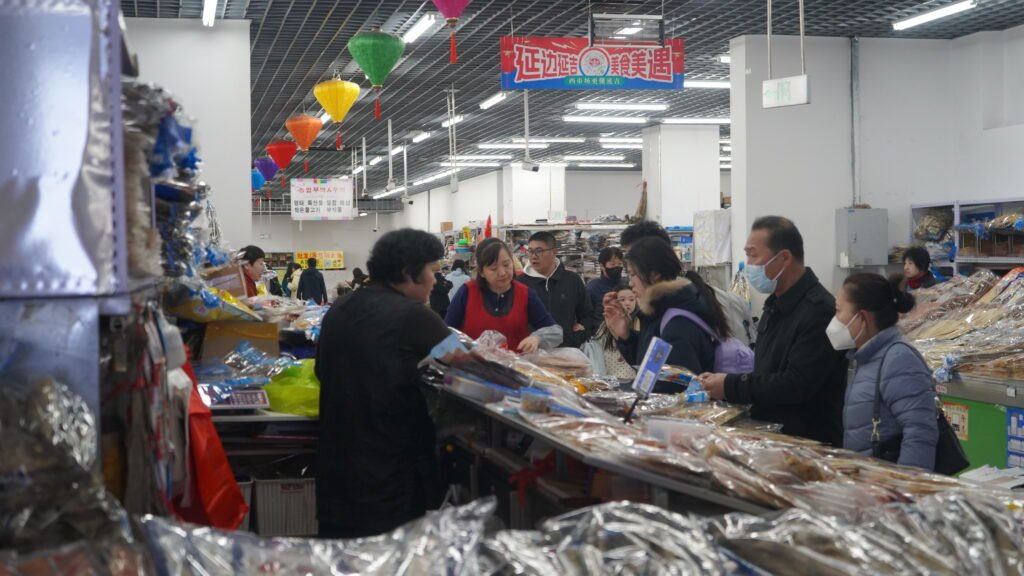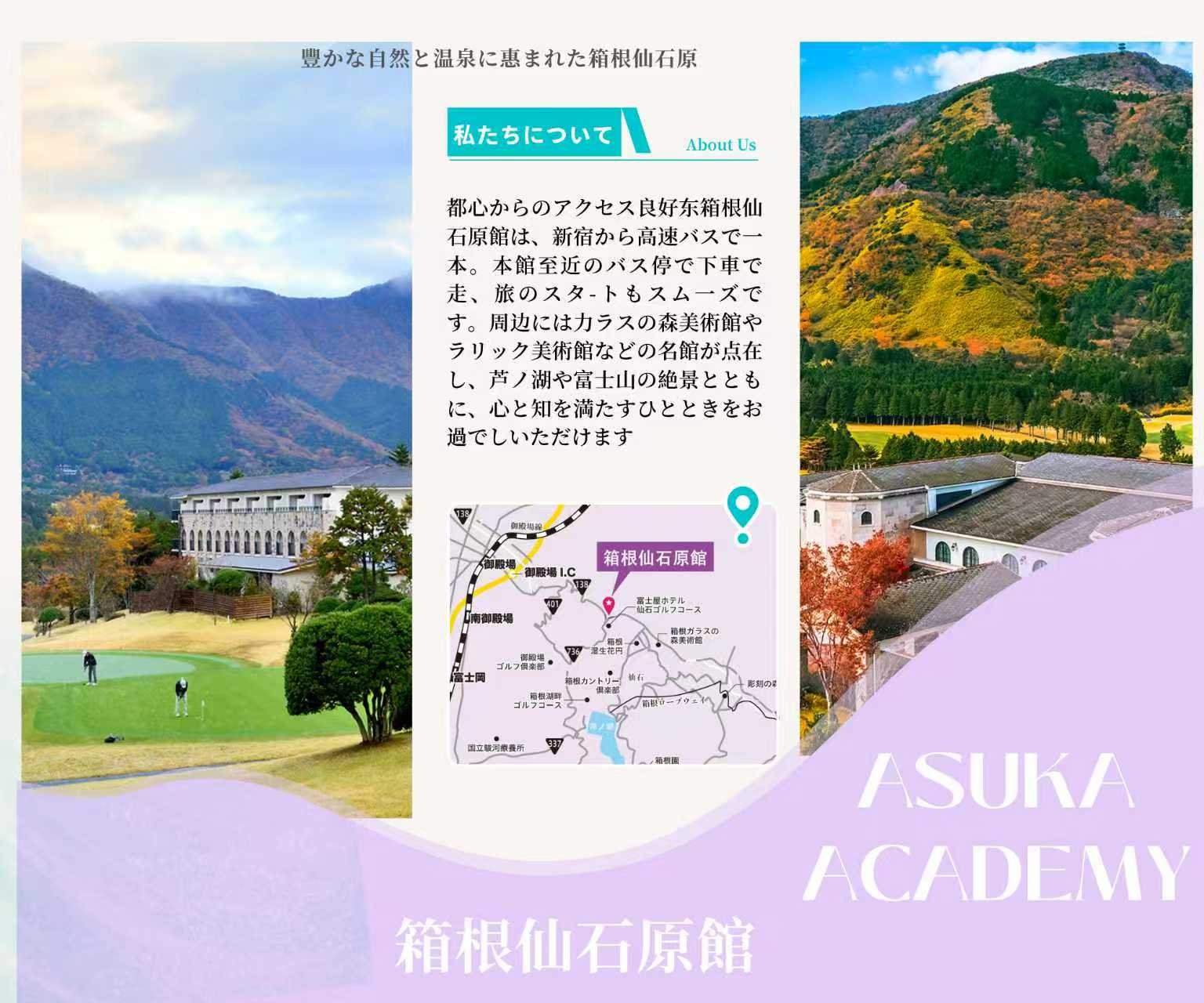With the mutual visa exemption policy between China and South Korea now in effect, Jilin Province’s Yanbian Korean Autonomous Prefecture is seeing a surge of Korean tourists. As temperatures rise with spring, destinations like Changbai Mountain, Yanji, Tumen, and Longjing have become top picks for Korean travelers.
On flights from Incheon (Seoul) to Yanji, over 50% of passengers are Korean, and the “2-hour flight with a 1-hour time gain” experience has become a trending topic on Korean social media.
At the arrival hall of Yanji Chaoyangchuan Airport, Jung Hak-bong, an ethnic Korean tour guide from Spring Travel Agency, holds up a Korean-language welcome sign while smoothly coordinating arriving tour groups. Visitors immediately embark on a 3-day, 2-night “mini-vacation” — starting with a culinary stop along the Tumen River, followed by a tour of the China–North Korea border, and finally a trip to the stunning landscapes of Changbai Mountain. With the new Yanji–Changbai Mountain expressway now open, travel time has been reduced to just 1.5 hours, significantly improving accessibility.
According to statistics from Yanji Chaoyangchuan International Airport, South Korean nationals make up 96% of foreign entries and exits, with 85% coming for tourism purposes.
Must-Visit Spots for Korean Tourists
Changbai Mountain Tianchi (Heaven Lake)

Features: The world’s highest volcanic lake (elevation: 2,189.1m) and China’s deepest lake (max depth: 373m). The full lake view is visible on only about 90 days per year. The best viewing season is June to September. In winter, ice can reach 1–2 meters thick and begins melting in late May.
Tips: Best seasons are June–September and September–October. Use the “Changbai Mountain Tianchi Forecast” mini-app for real-time visibility updates. Arriving before 10 a.m. increases the chance of a clear view. Temperatures at the summit are 10°C lower than at the base — windproof jackets are a must (rentals available).
Tumen River Border Area
Features: A key point on the China–North Korea border, offering a unique “two countries in one view” experience. Visitors can see North Korean villages and farmland.
Tips: Ideal weather from May to October. Photography of North Korean military installations is prohibited. Drones, crossing the border, or throwing objects across the border are strictly forbidden.
Korean Folk Culture Village
Features: A recreated traditional Korean village, offering cultural experiences such as hanbok rentals and kimchi-making.
Tips: Visit before 9 a.m. or after 3 p.m. to avoid crowds. Some activities require reservations and extra fees.
Affordable Prices and Diverse Flavors: Korean Visitors Flock to Local Markets

Yanji’s West Market has become a “shopping paradise” for Korean homemakers.
“Watermelon is only 10 yuan per jin (500g) here — in Seoul, it’s 160 yuan!” exclaimed one Korean visitor. The combination of quality and affordability makes local fruit and specialties irresistible. Yanbian apples and pears are crisp and juicy, with mangoes and watermelons often selling out.
Yanbian’s unique cuisine also leaves a lasting impression. From glutinous rice chicken and sausage to acorn jelly salad and sweet-and-sour pork, Korean visitors enjoy familiar roots with surprising flavors.
Park Ji-hoon, a tourist from Seoul, noted, “The glutinous rice sausage here has more bite than Korea’s glass noodle version, and the sweet-and-sour pork is served with sauce already on it — better flavor, better price.”
Premium yellow beef is especially popular, costing only one-fifth of Korean “hanwoo” beef, creating what many describe as “a dream-value dining experience.”
“Chinese-Style Happiness” Wins Korean Visitors’ Hearts
At Yanji’s morning wet market, the air is thick with the scent of freshly cooked rice sausage and sticky rice cakes, drawing curious Korean visitors.
“This bowl of soup rice is only 18 yuan, and it’s full of beef!” exclaimed Kim Mi-jin while snapping photos.
On social media, Northeast Chinese dishes like seafood pancakes, fish skin rice wraps, samgyetang, and fried dough sticks with tofu pudding are gaining viral attention.
These authentic local breakfasts and the bustling street vibes are becoming symbols of “Chinese-style happiness” in the eyes of Korean tourists.
Regional Specialties Are a Hit: “K-Wave Meets Northeast China” Goes Viral
With an average spend of 5,000 yuan per person on souvenirs, Korean tourists are embracing Northeast China’s specialty goods. Matsutake mushrooms, dried pollock, black fungus, and hazel mushrooms are especially popular.
“Matsutake sells for over 10,000 won in Korea, but here it’s around 2,000 yuan — plus it’s the source region. It’s an impressive gift,” said one visitor.
Guide Jung Hak-bong added, “Pollock is common in North Korea but rare in South Korea. It pairs well with soju and is very popular to bring home.”
Locally made fruit-infused rice wines are also a favorite among younger travelers and a hot item on social media.
Tour Bookings Surge as Guides Rush to Keep Up
“Since the visa-free policy took effect, tours have been fully booked almost every day,” said guide Jung Hak-bong. April and May mark peak season for Korean tourists, with over 100 tour guides working non-stop.
The well-designed 3-day, 2-night itinerary, averaging around 3,000 yuan, offers a high-value, low-cost travel experience that appeals to group travelers.
“Once we see one group off, the next one’s already landing,” Jung laughed. During peak periods, a single guide may lead 7–8 tour groups per month.
One City, Two Cultures: Yanji Pushes Creative Tourism Products
With its unique integration of Han and Korean cultures, Yanji has become a frontier hub for China–Korea cultural exchange.
Popular activities include checking in at trendy “Instagram walls,” trying on traditional Korean attire, and buying creative souvenirs with “Yanji” logos.
Yanji’s cultural and tourism authorities are also revitalizing old industrial sites. The “Yanji 1978 Cultural Park,” repurposed from a former locomotive factory, has become a trendy destination blending art, retail, and entertainment — injecting new cultural energy into the city.




